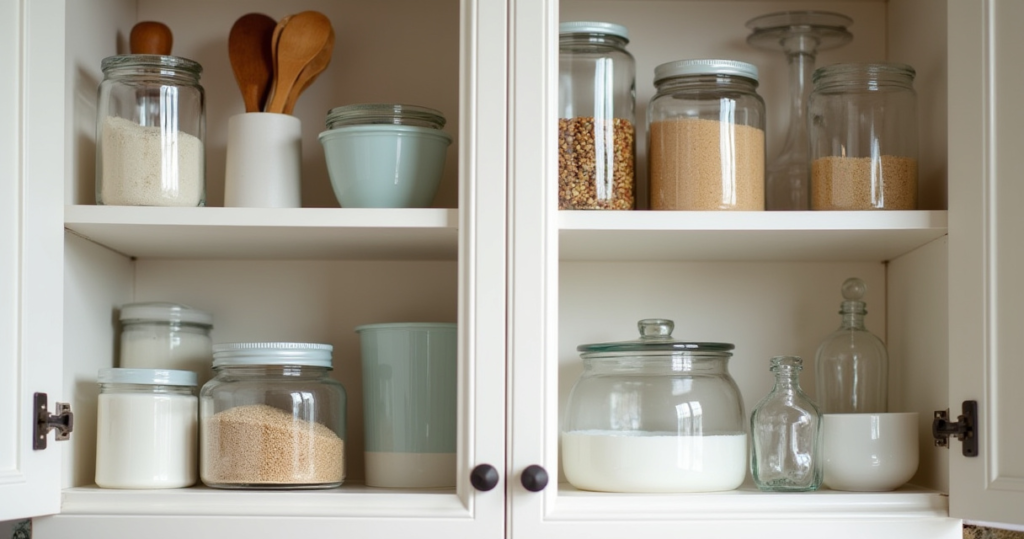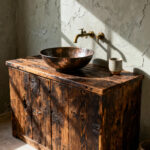Picture this: you’re rushing to prepare dinner after a long day, but every cabinet you open reveals a chaotic jumble of mismatched containers, forgotten spices, and precariously stacked pots. Sound familiar? You’re not alone in this daily dance of kitchen frustration, where valuable time slips away searching for that one elusive lid or ingredient buried somewhere in the depths of your cabinets.
The kitchen should be your culinary sanctuary, not a source of daily stress. What if I told you that with some clever strategies and seasonal thinking, you could transform those chaotic cabinets into beautifully organized, highly functional spaces? As someone who’s helped countless families transition their kitchens through different seasons and entertaining needs, I’ve discovered that smart storage isn’t just about buying more organizers – it’s about creating systems that adapt and grow with your lifestyle.
Get ready to unlock the hidden potential in your kitchen cabinet storage with 22 brilliant hacks that will revolutionize how you cook, entertain, and move through your space. From simple DIY solutions to game-changing organizational tools, these strategies will help you reclaim your countertops, streamline meal prep, and create the efficient kitchen you’ve always dreamed of having.
1. Start Fresh: The Essential Decluttering Foundation
Before diving into any exciting organizational solutions, we need to address the elephant in the room – that overwhelming collection of “just in case” kitchen items that have been quietly multiplying in your cabinets. This crucial first step isn’t just about tidying up; it’s about making intentional decisions that will set the stage for a truly functional kitchen cabinet storage system that works year-round.
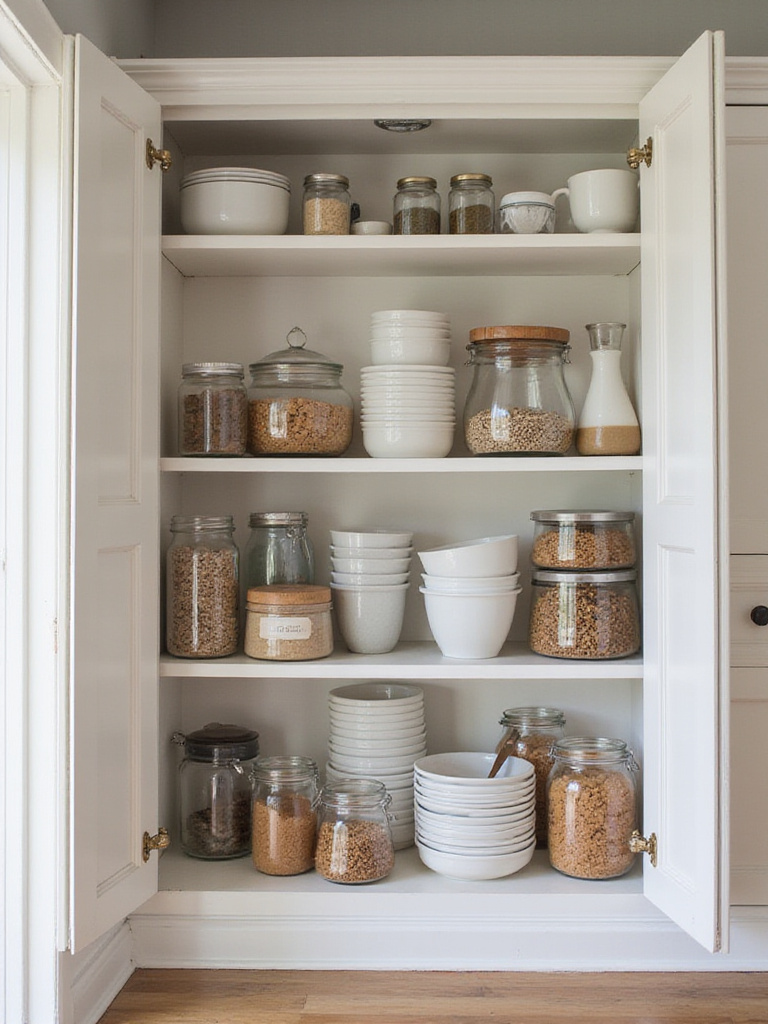
The transformation begins when you completely empty one cabinet at a time, creating three distinct piles: keep, donate, and toss. Be ruthlessly honest about what you actually use – that bread maker gathering dust since 2019 or the collection of takeout containers without matching lids aren’t serving your daily cooking needs. Professional organizers consistently find that most households can eliminate 30-40% of their kitchen items without missing them, instantly creating more breathing room for the things that truly matter.
The magic happens when you realize how much space you’ve been wasting on items that don’t earn their place in your kitchen. One family I worked with discovered they had seven can openers scattered across different drawers, keeping only their favorite and donating the rest. This simple purge freed up an entire drawer for their growing collection of holiday baking supplies, proving that sometimes less really is more.
As afternoon light streams through your newly organized space, you’ll appreciate how this foundation makes every subsequent organizational strategy more effective.
2. Measure Twice, Organize Once: The Power of Precision
Nothing derails a kitchen cabinet storage project faster than discovering your carefully chosen organizers don’t actually fit your space. This step might seem tedious, but precise measurements are the difference between a Pinterest-worthy transformation and a pile of returned products cluttering your entryway.
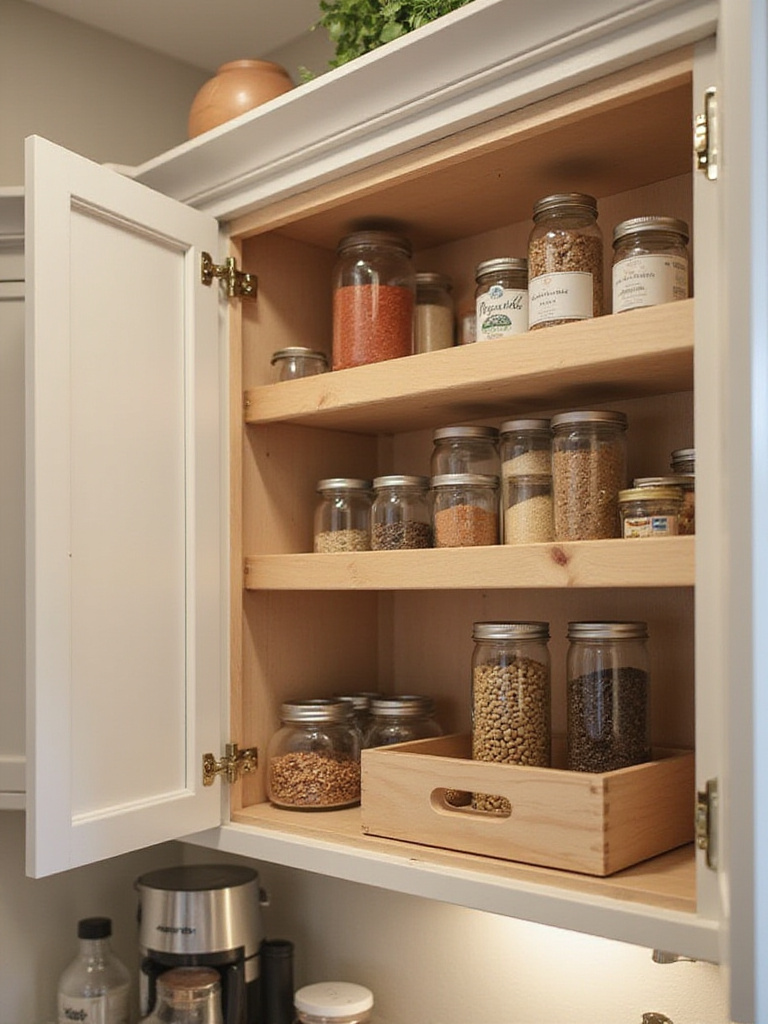
Armed with a reliable tape measure, record the width, depth, and height of each cabinet’s interior space, paying special attention to any obstructions like pipes, hinges, or electrical outlets. Don’t forget to measure at multiple points – older homes especially can have cabinets that aren’t perfectly square. Create a simple sketch noting these dimensions, which becomes invaluable when shopping online or comparing different organizational systems.
- Interior width: Measure at the front, middle, and back
- Usable depth: Account for door clearance and hinges
- Vertical space: Note any lips or frames that reduce height
- Obstructions: Mark pipes, outlets, or mounting hardware
The investment in accurate measuring pays dividends when your chosen solutions slide in perfectly, maximizing every precious inch of kitchen cabinet storage without any frustrating returns or modifications.
What makes this collection special is the way each measurement becomes a canvas for creating perfectly tailored storage solutions.
3. Tame the Under-Sink Wilderness with Smart Pull-Outs
The under-sink cabinet often becomes the Bermuda Triangle of kitchen cabinet storage, where cleaning supplies disappear into a dark void of plumbing and mystery spills. This awkward space, with its maze of pipes and limited visibility, desperately needs a systematic approach that works around its unique challenges while maximizing every available inch.
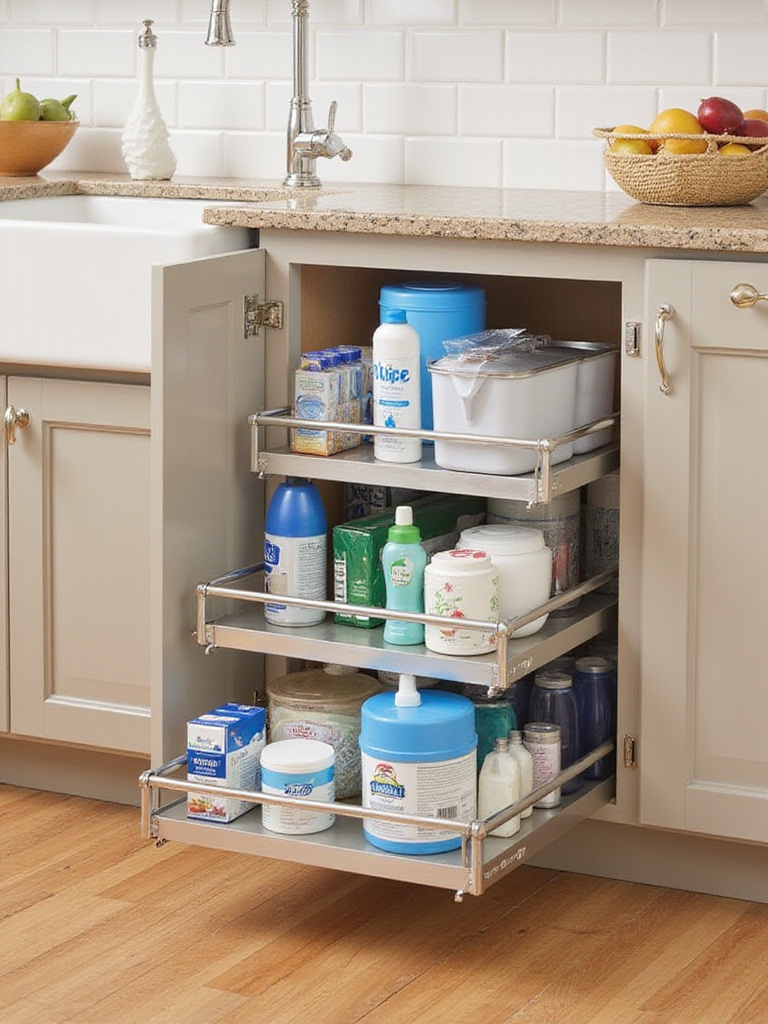
Pull-out systems designed specifically for under-sink areas transform this problematic space into a highly functional storage zone. These clever solutions feature U-shaped cutouts that accommodate plumbing while creating multiple tiers for organizing everything from dish soap to scrub brushes. The key is choosing moisture-resistant materials like chrome or heavy-duty plastic that can handle the occasional splash or leak without deteriorating over time.
Consider investing in a two-tiered system where tall spray bottles live on the upper level while bulkier items like detergent refills occupy the lower tier. Adding a waterproof mat to the cabinet floor provides extra protection against spills while making cleanup effortless. The transformation is remarkable – what once required excavation to find anything now offers instant access to every cleaning essential.
Look closely and you’ll notice the subtle texture of well-organized efficiency that emerges when every cleaning supply has its designated home.
4. Corner Cabinet Rescue: Lazy Susans to the Rescue
Corner cabinets represent some of the most challenging real estate in kitchen cabinet storage, often becoming black holes where appliances and ingredients vanish into unreachable depths. These deep, awkward spaces typically end up housing items that migrate to the back and stay there, forgotten until the next major kitchen cleanout reveals their dusty existence.
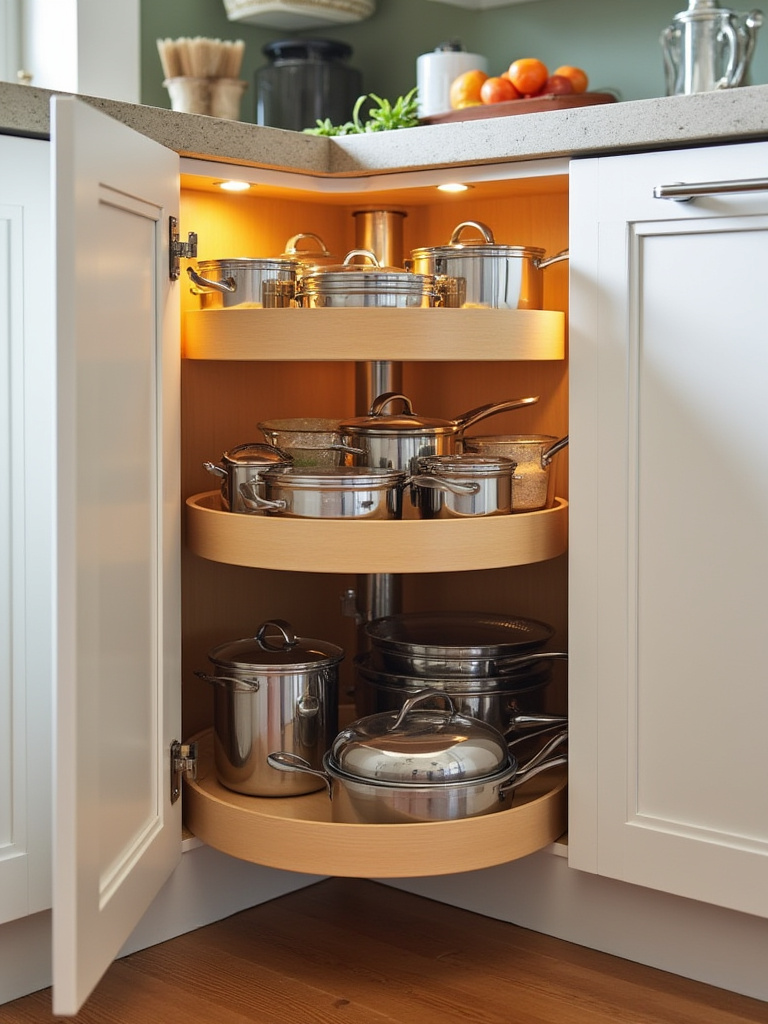
The genius of a well-chosen Lazy Susan lies in its ability to bring the unreachable within arm’s reach with a simple spin. Whether you opt for a full-round version for true corner cabinets or a kidney-shaped model for blind corners, these rotating shelves can effectively double your usable storage space. The key is selecting the right size and style for your specific cabinet configuration while considering the weight capacity needed for your intended items.
Installation varies from simple drop-in models to more complex pole-mounted systems, but the payoff is immediate. Suddenly, that forgotten stand mixer becomes accessible, and your collection of specialty oils and vinegars can be organized in a way that makes sense. The smooth rotation eliminates the need to unpack half the cabinet to reach one item, transforming corner chaos into organized efficiency.
Beyond the obvious placement, consider using this rotating real estate for seasonal items that need periodic access but don’t require daily visibility.
5. Spice Storage That Actually Makes Sense
Spice organization often feels like an impossible puzzle – those tiny, similarly-shaped jars seem determined to create chaos no matter how carefully you arrange them. The frustration multiplies when you’re mid-recipe, frantically searching for that one essential spice while something sizzles impatiently on the stove, turning cooking from joy into stress.

Tiered racks and drawer inserts solve this problem by creating a stadium-style arrangement where every spice label is visible at a glance. Whether you choose an expandable rack for cabinet shelves or a custom insert for a dedicated spice drawer, the goal is eliminating the archaeological dig required to find specific seasonings. Consider organizing alphabetically for quick reference, or group by cuisine type if you frequently cook themed meals.
- Alphabetical arrangement: Fastest for finding specific spices
- Cuisine grouping: Italian, Asian, Mexican sections
- Frequency-based: Most-used spices in front positions
- Color coordination: Creates visual appeal and easy scanning
For drawer storage, labeling the tops of spice jars creates an instant identification system when looking down into the drawer. This simple addition transforms spice selection from a guessing game into an efficient, almost meditative part of cooking preparation.
The designer’s secret here is to treat your spice collection like a carefully curated palette that enhances both function and visual appeal.
6. Vertical Victory: Organizing Pots and Pans
The traditional method of stacking pots and pans creates a precarious tower that’s both noisy to navigate and damaging to your cookware. Every time you need the bottom pan, you’re forced to perform a careful balancing act that often ends with clanging metal and scratched surfaces, making cooking feel more like a construction project than culinary creativity.
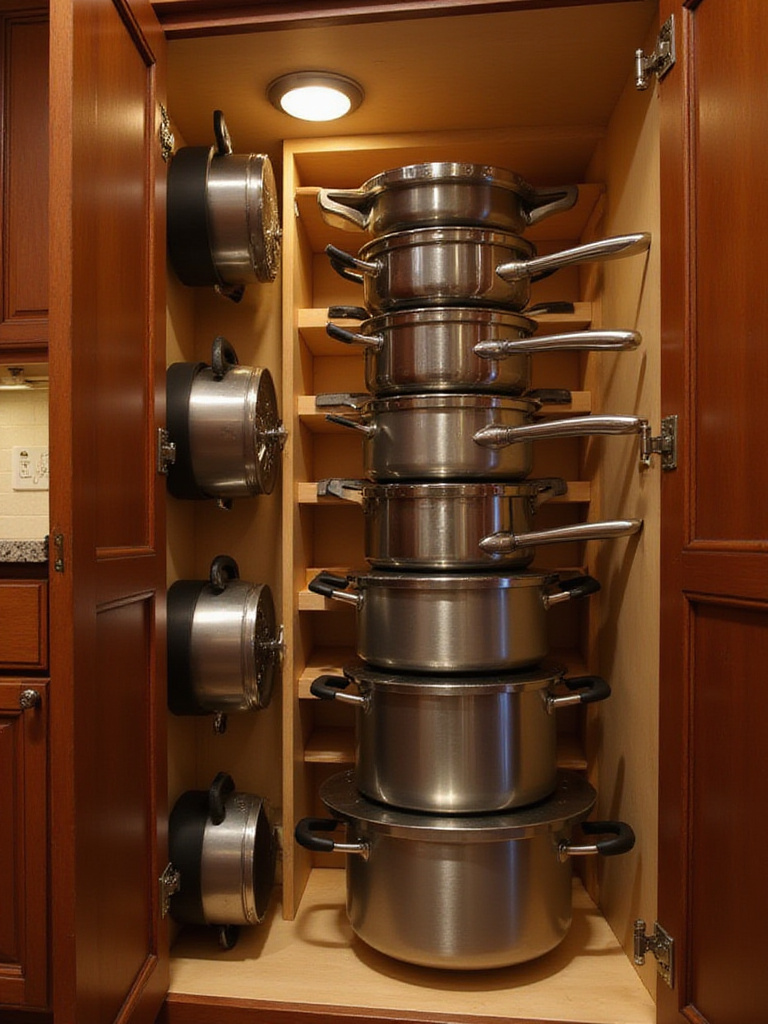
Vertical dividers revolutionize this storage challenge by giving each piece of cookware its own designated slot. Whether you choose adjustable wire systems or custom wooden dividers, the principle remains the same – storing items upright eliminates stacking and makes every pot, pan, and lid immediately accessible. This approach also protects non-stick surfaces and prevents the warping that can occur when heavy items rest on delicate ones.
The transformation is immediately apparent when you can slide out any pan without disturbing others, and the visual organization brings a sense of professional kitchen efficiency to your home space. Consider dedicating specific sections to different types of cookware – all frying pans together, saucepans in another area, and specialty items like woks or tagines in their own zones.
The magic of this piece lies in its ability to turn chaotic clanging into smooth, silent efficiency that makes cooking preparation genuinely enjoyable.
7. Bakeware Breakthrough: Standing Tall for Easy Access
Baking sheets, cutting boards, and cooling racks suffer from the same stacking syndrome as pots and pans, creating unstable towers that make retrieving any single item an exercise in careful engineering. This horizontal storage method wastes valuable vertical space while making your baking supplies harder to access and more prone to damage from constant restacking.
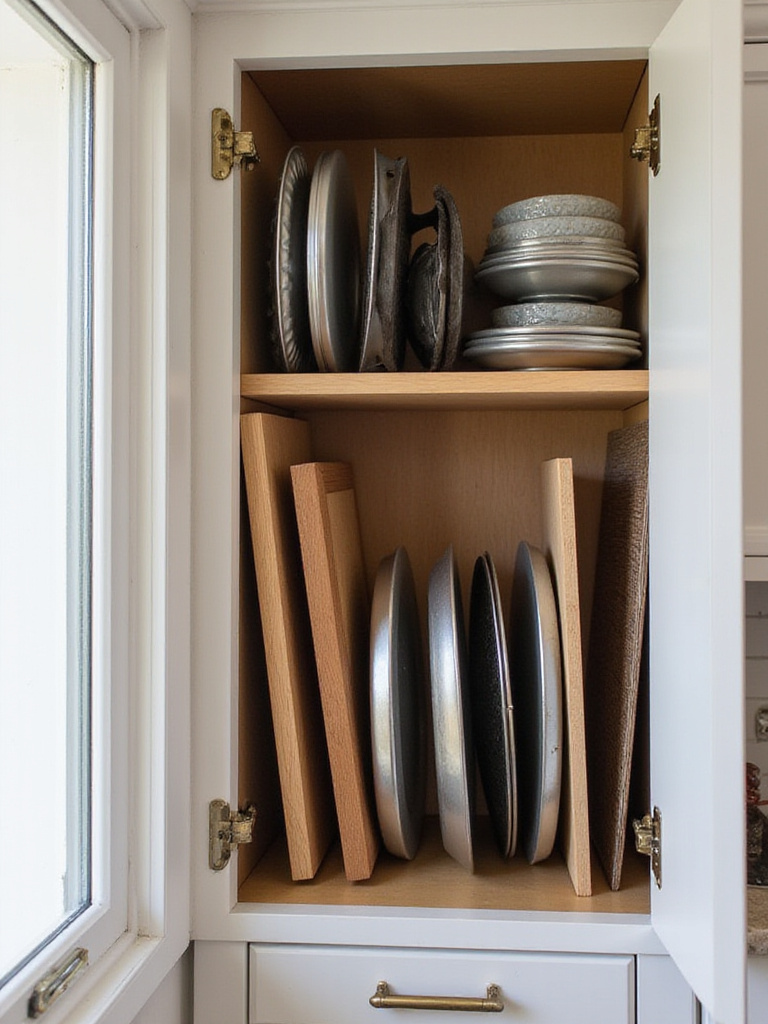
Vertical storage transforms these flat, awkward items into an organized library where each piece has its own slot. The key is creating dividers that are sturdy enough to support the weight of multiple heavy baking sheets while maintaining easy access. Wire dividers work well for lighter items, while wooden or metal systems handle heavier pieces like cast iron griddles or large cutting boards.
The efficiency gains become apparent immediately – no more avalanches when you need just one cookie sheet, and no more scratched surfaces from items rubbing against each other. This method also makes it easier to see exactly what you have, preventing duplicate purchases and ensuring your most-used items stay easily accessible.
What surprises clients most is how this works with seasonal baking needs, allowing easy access to holiday cookie sheets while keeping everyday items equally organized.
8. Double Your Shelf Impact with Strategic Risers
Most kitchen cabinet storage operates on a single-level system that ignores the valuable vertical space above shorter items like coffee mugs, small plates, or canned goods. This wasted “dead space” represents a significant opportunity to increase storage capacity without adding new cabinets or expanding your kitchen footprint.
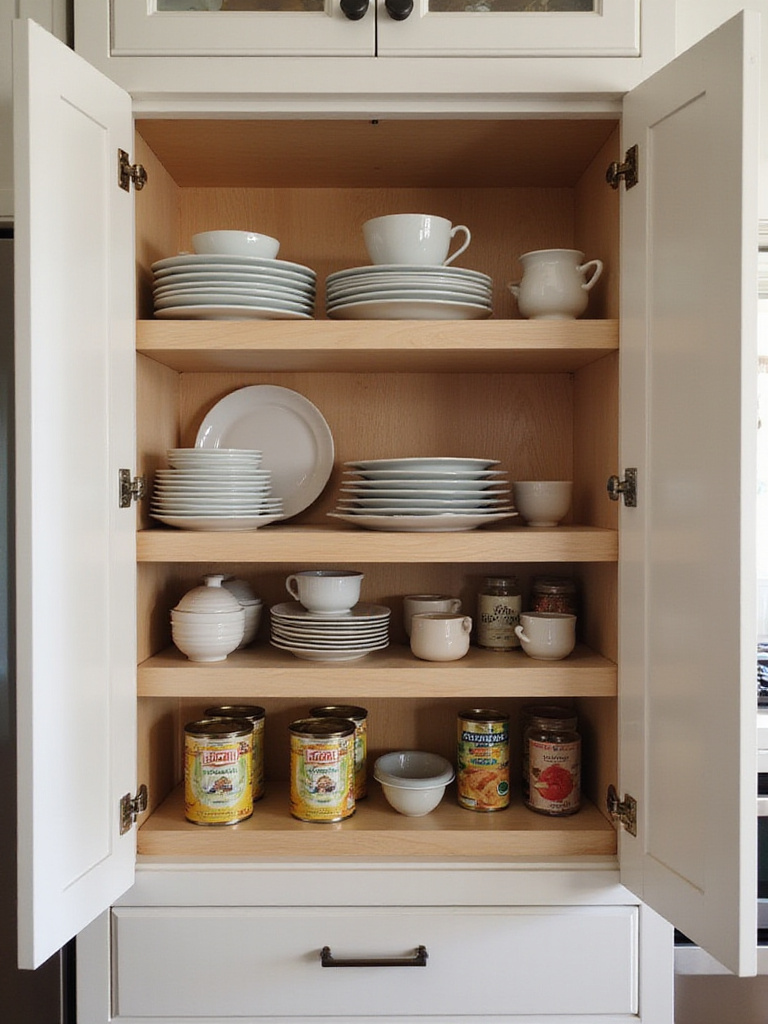
Shelf risers create an instant second story within your existing cabinets, effectively doubling storage capacity for appropriate items. The key is choosing risers that complement your cabinet dimensions while supporting the weight of your intended items. Wire risers offer durability and visibility, while bamboo options provide a warmer aesthetic that works beautifully with natural kitchen elements.
Strategic placement makes all the difference – use risers to create separate zones for dinner plates and salad plates, or to organize canned goods by height for easy identification. The visual organization that results makes inventory management effortless while maximizing every cubic inch of available space.
- Wire construction: Maximum durability and visibility
- Bamboo materials: Eco-friendly with natural warmth
- Expandable designs: Adjust to fit varying cabinet widths
- Non-slip surfaces: Keep items secure and stable
The unexpected pairing that always works is combining risers with clear storage containers for ultimate visibility and organization.
9. Pull-Out Power: Bringing Deep Cabinets Forward
Deep base cabinets promise generous storage but often deliver frustration instead, with items disappearing into dark recesses that require spelunking expeditions to access. The back half of these cabinets frequently becomes a graveyard for forgotten appliances and expired pantry items, representing wasted space and wasted money in equal measure.
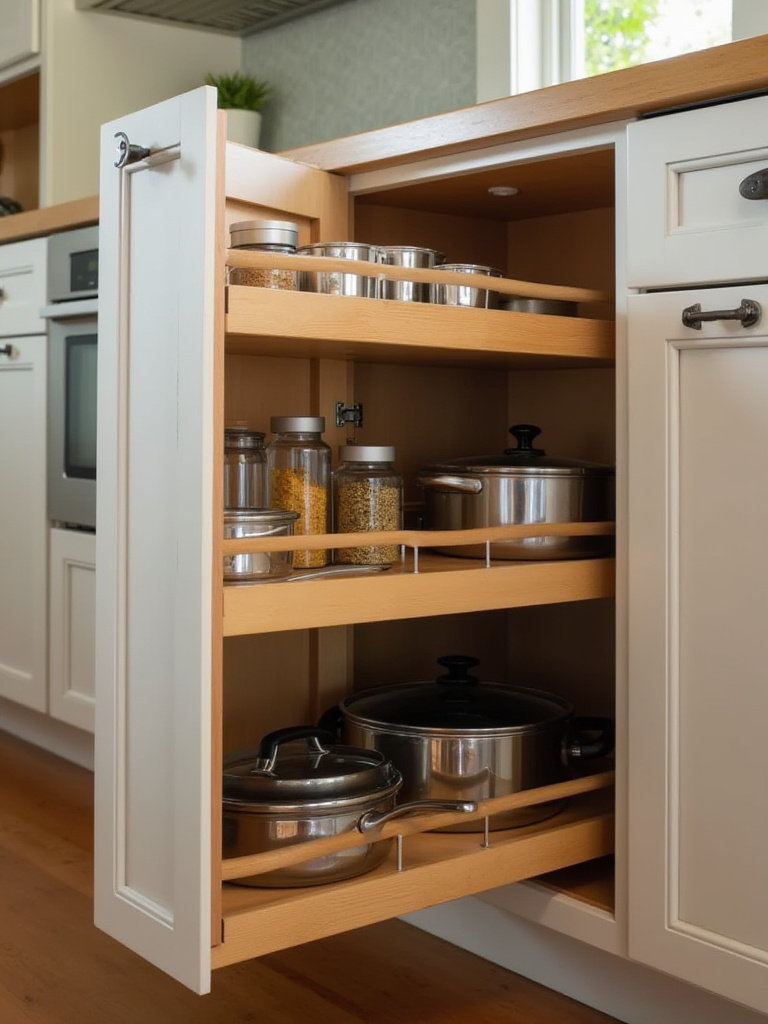
Pull-out shelves solve this accessibility crisis by bringing the entire contents of deep cabinets directly to you. These drawer-like systems install within existing cabinet frames, transforming static storage into dynamic, user-friendly access points. The investment in full-extension slides pays dividends in both convenience and cabinet longevity, as you’ll no longer need to reach awkwardly or stack items precariously.
The transformation affects more than just storage – it changes how you use your kitchen. Suddenly, that heavy stand mixer stored in a deep cabinet becomes accessible enough for regular use, and your collection of specialty appliances transitions from “someday” items to regular rotation tools. The improved visibility also helps with inventory management, reducing duplicate purchases and food waste.
When clients ask us about balancing style with functionality, pull-out shelves represent the perfect marriage of both priorities.
10. Cabinet Door Real Estate: Hidden Storage Goldmine
The inside surface of cabinet doors represents one of the most underutilized spaces in kitchen cabinet storage, offering valuable vertical real estate that typically goes completely ignored. This overlooked area provides perfect storage for lightweight, frequently accessed items while freeing up prime shelf space for bulkier necessities.
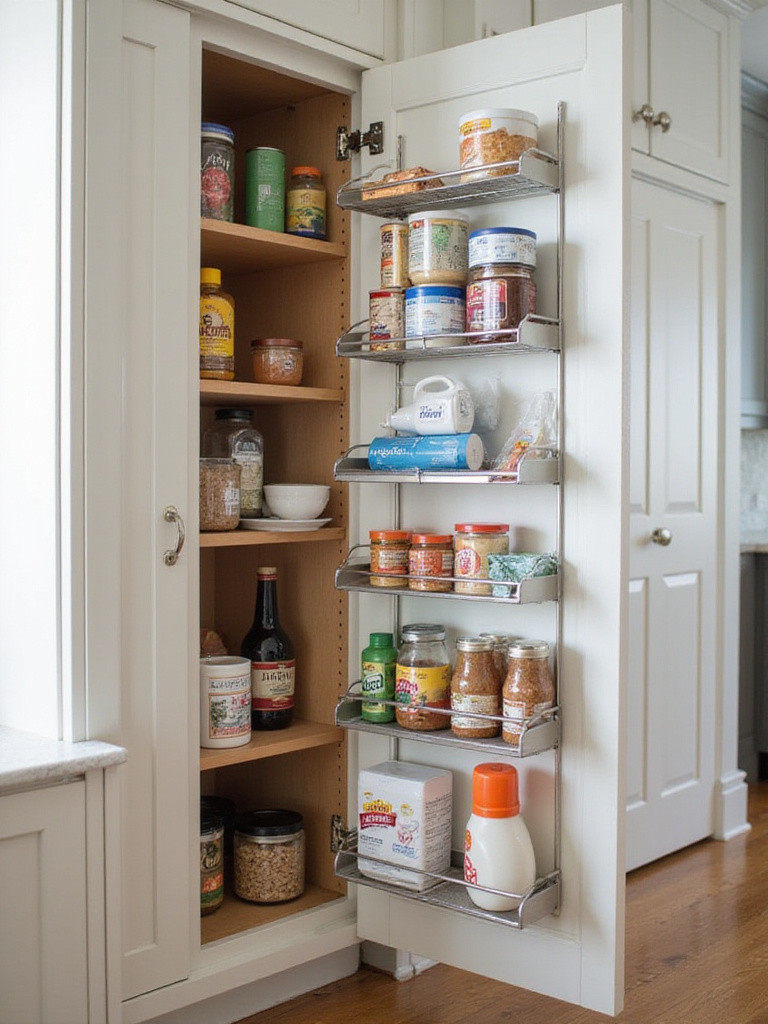
Door-mounted racks excel at organizing items like aluminum foil, plastic wrap, and parchment paper – those awkward boxes that never seem to fit neatly anywhere else. The key is selecting organizers that won’t interfere with door closure while providing secure storage for items that might otherwise create drawer clutter. Consider weight distribution carefully, as overloading door storage can strain hinges over time.
Installation varies from simple over-the-door hooks to more permanent screw-mounted systems, depending on your commitment level and rental situation. The immediate impact on organization is remarkable – suddenly those essential but oddly-shaped items have logical homes that make sense within your cooking workflow.
The versatility reveals itself when you pair door storage with seasonal organization, rotating items based on your current cooking and entertaining needs.
11. Appliance Parking: Clearing Counter Clutter
Countertop appliances have a way of multiplying and claiming permanent residence on valuable work surfaces, creating visual clutter while reducing available prep space. The challenge lies in finding storage solutions that keep frequently used appliances accessible while maintaining the clean, uncluttered aesthetic that makes kitchens feel spacious and organized.
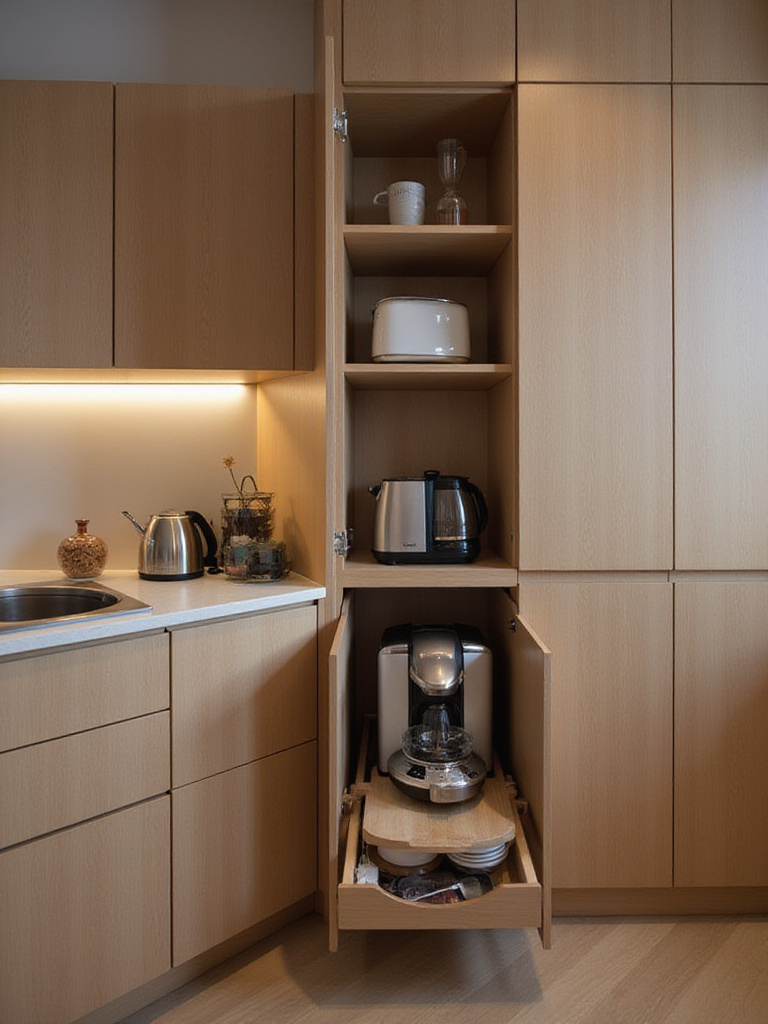
Dedicated appliance zones solve this problem by creating specific homes for different categories of small appliances based on usage frequency and size. Daily-use items like coffee makers might earn spots in appliance garages with built-in outlets, while seasonal items like ice cream makers can live in higher cabinets or pantry areas. The key is matching storage location to usage patterns.
Consider creating themed zones – a baking station with stand mixer and accessories, a beverage center with coffee and tea supplies, or a breakfast nook with toaster and waffle maker. This approach not only clears counters but also streamlines cooking workflows by grouping related items together.
- Daily appliances: Easy-access garages with power outlets
- Weekly items: Pull-out shelves in base cabinets
- Seasonal tools: Upper cabinets or pantry storage
- Heavy equipment: Mixer lifts or rolling carts
The finishing touch that elevates the entire look is ensuring each appliance zone includes its related accessories and supplies.
12. Container Control: Mastering the Lid Game
Food storage containers represent one of the most universally frustrating aspects of kitchen cabinet storage, with their tendency to create avalanches of mismatched lids and bottoms that never seem to pair correctly. This chaos isn’t just annoying – it wastes time, creates stress, and often leads to food waste when proper storage containers can’t be located quickly.
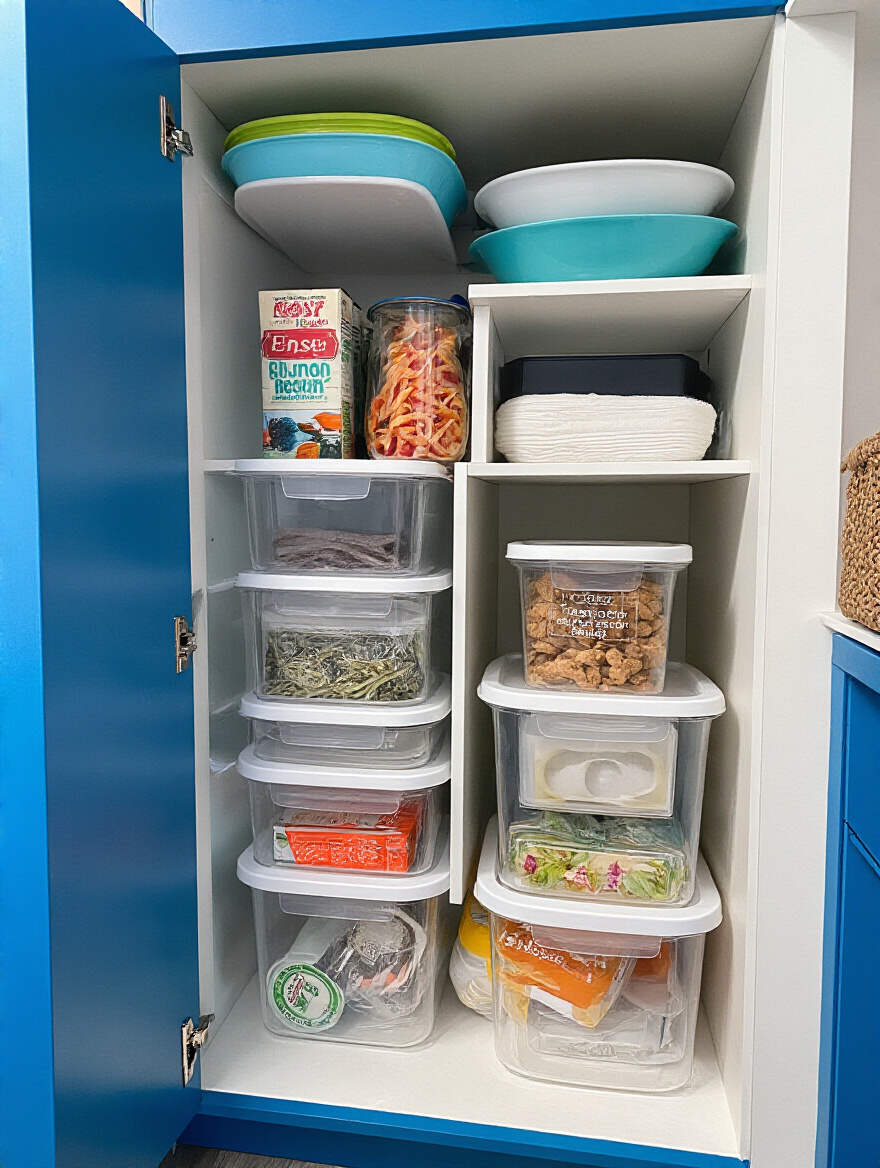
The solution lies in separating container bodies from their lids and treating each as distinct organizational challenges. Nest container bottoms by size and material, while storing lids vertically in dedicated organizers that make each size immediately visible and accessible. This approach eliminates the dreaded lid hunt while maximizing storage efficiency through strategic nesting.
Investing in a uniform container system over time pays dividends in both organization and functionality. When lids are interchangeable within size categories, the matching game becomes infinitely easier. Clear containers also help with leftover identification and food rotation, supporting both organization and food safety goals.
The composition comes together when you designate specific containers for specific purposes – lunch prep, leftover storage, or pantry organization – creating systems within systems.
13. Zone Defense: Strategic Kitchen Organization
The most efficient kitchens operate on the principle of functional zoning, where related items live near their point of use rather than scattered randomly throughout available storage space. This strategic approach to kitchen cabinet storage reduces unnecessary movement while cooking and creates intuitive organization that makes sense to everyone who uses the space.
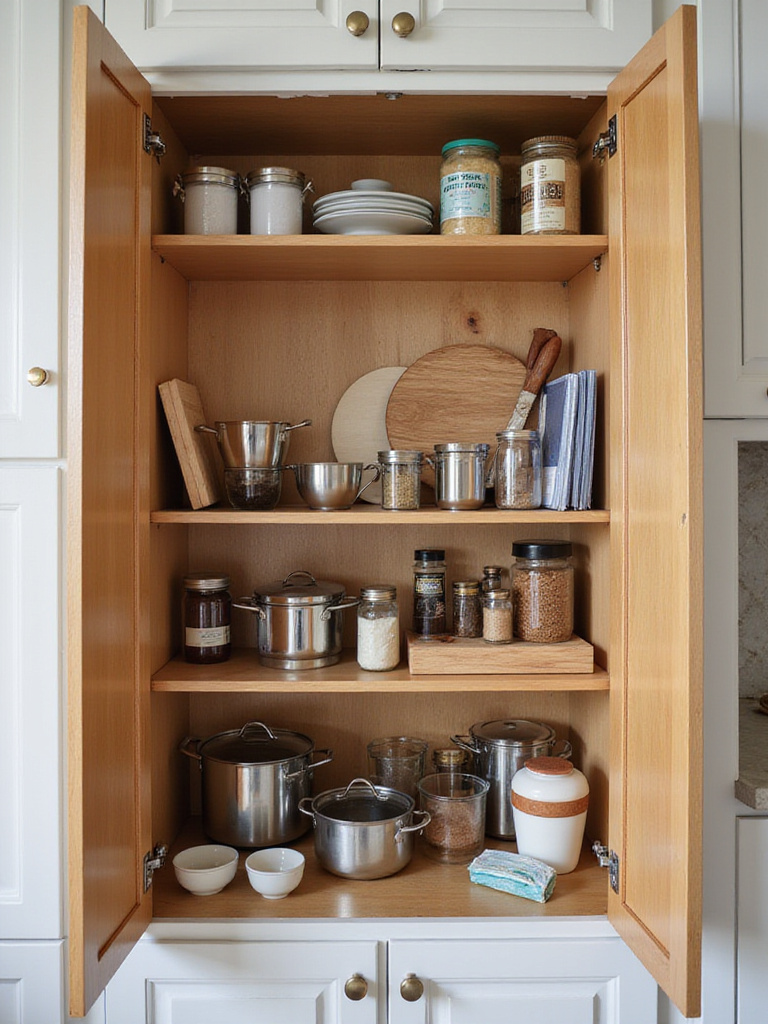
Successful zoning starts with observing your natural cooking patterns and identifying the primary work triangles in your kitchen. Prep tools and cutting boards belong near your primary workspace, while pots and pans should live close to the stove. Baking supplies earn their own dedicated zone, complete with measuring tools, mixing bowls, and specialty ingredients that don’t need daily access.
The key is thinking beyond just storage to consider workflow efficiency. When everything needed for a specific task lives in the same area, cooking becomes more enjoyable and less chaotic. This approach also helps with meal planning and grocery shopping, as you can quickly assess what you have in each category.
- Prep zone: Knives, cutting boards, mixing bowls near workspace
- Cooking zone: Pots, pans, oils, spices near stovetop
- Baking zone: Measuring tools, specialty ingredients, pans
- Cleanup zone: Storage containers, wraps, dish towels
Even in smaller spaces, here’s how this works – vertical zoning allows you to create distinct areas within limited cabinet space.
14. Crystal Clear Strategy: See-Through Storage Solutions
The “out of sight, out of mind” phenomenon plagues kitchen cabinet storage, leading to forgotten ingredients, expired products, and frustrating duplicate purchases. Clear storage containers solve this visibility problem while creating uniform, organized appearances that make cabinets feel more spacious and intentional.
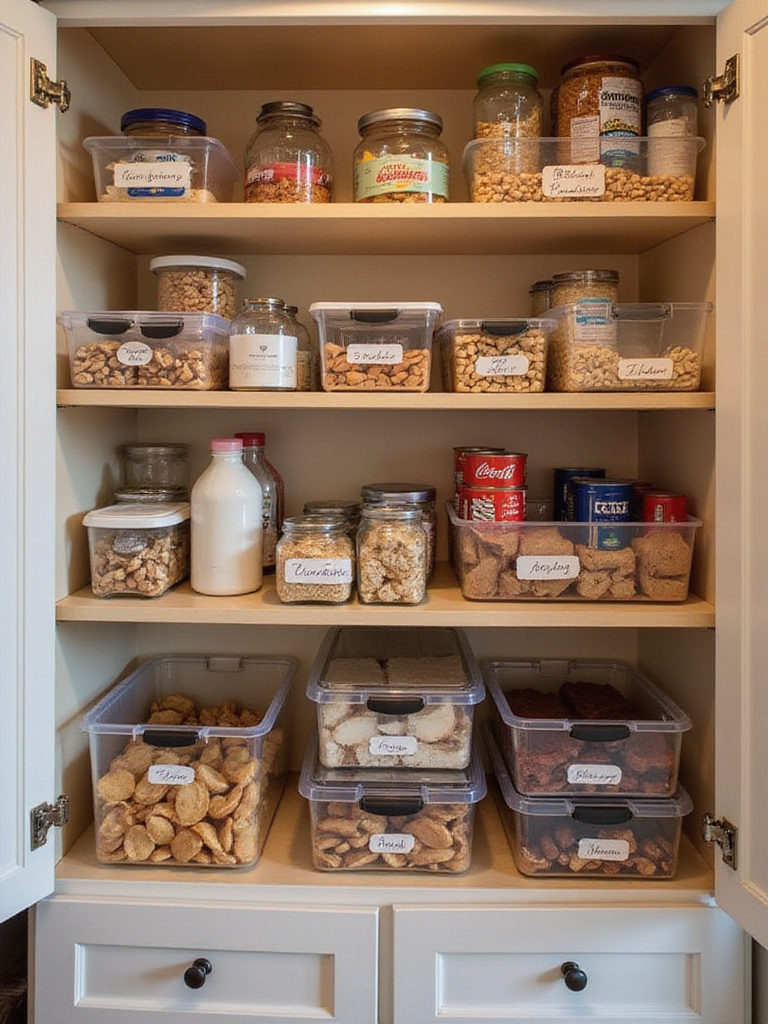
Transparent bins work particularly well for pantry items, snacks, and bulk goods that benefit from easy identification and portion control. The visual accessibility helps with meal planning and grocery shopping, as you can quickly assess quantities and freshness without opening multiple containers. This approach also supports better food rotation and waste reduction.
The key to successful clear storage lies in choosing appropriate sizes and shapes for your specific cabinet dimensions while considering the items you need to store. Airtight options work well for dry goods, while open bins excel for items like snack bars or tea bags that need frequent access.
The environmental story behind this choice involves reducing packaging waste while improving food storage longevity through better visibility and organization.
15. Deep Cabinet Conquest: Rolling and Expanding Solutions
Deep cabinets promise generous storage but often deliver accessibility nightmares, with items disappearing into dark recesses that require major excavation to access. These challenging spaces need specialized solutions that bring contents forward while maximizing the available depth without creating organizational chaos.
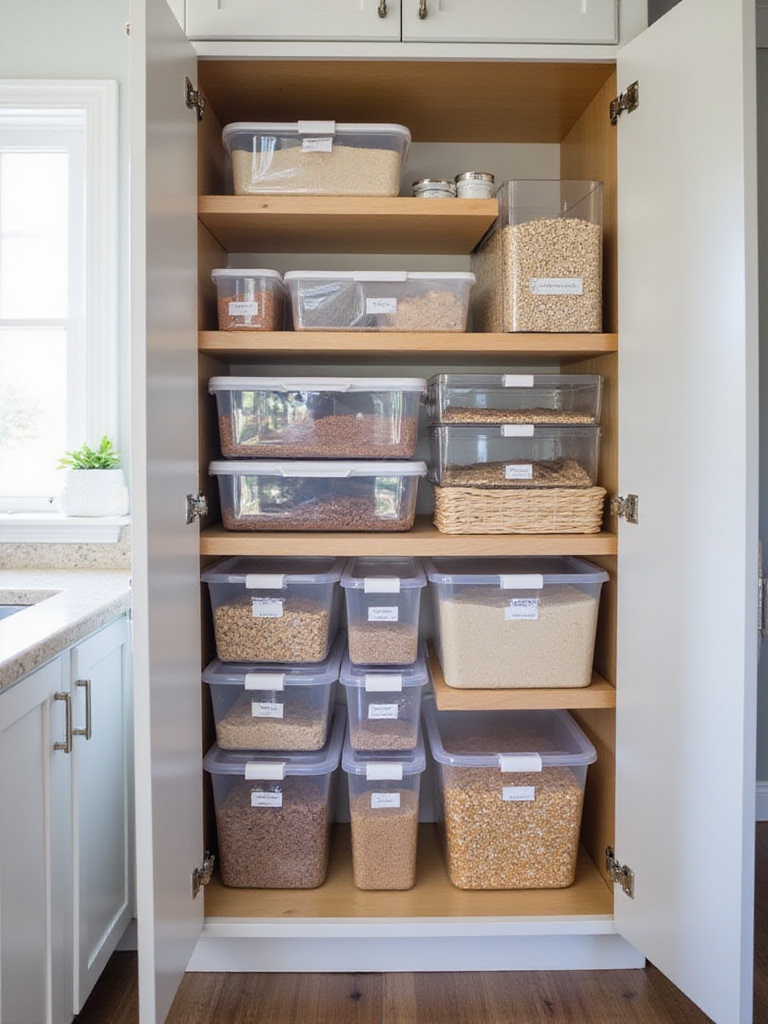
Rolling bins and expandable shelves address this problem by creating moveable storage that brings deep cabinet contents within easy reach. The key is selecting solutions that work with your cabinet dimensions while supporting the weight and size of your intended items. Clear rolling bins work particularly well for pantry items, while expandable shelves excel for dishes and glassware.
The transformation affects both storage capacity and daily usability, as previously inaccessible space becomes functional and organized. This approach also helps with inventory management, as you can easily see and access items that might otherwise be forgotten in the depths of deep storage.
What makes this design special is the way it adapts to changing storage needs while maintaining organization and accessibility.
16. Kid-Friendly Independence: Accessible Snack Stations
Creating dedicated, accessible spaces for children’s items within your kitchen cabinet storage system promotes independence while reducing daily requests for help. This approach benefits the entire family by establishing clear boundaries and expectations while teaching children valuable organizational skills that serve them throughout life.
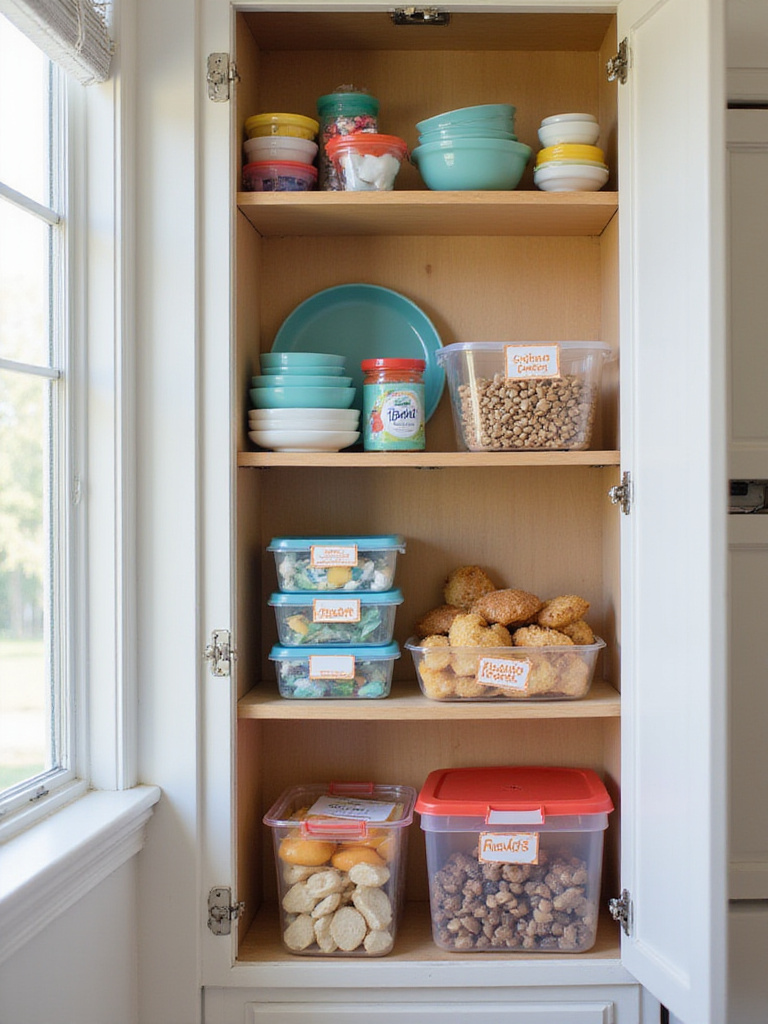
Lower cabinets and drawers provide perfect opportunities for child-friendly storage zones stocked with appropriate dishes, cups, and healthy snacks. The key is selecting items that are safe for independent use while maintaining organization systems that children can understand and maintain. Clear bins and picture labels help non-readers navigate their designated spaces successfully.
This strategy works particularly well during busy morning routines and after-school snack times, when children can independently access what they need without disrupting meal preparation or other kitchen activities. The empowerment that comes from self-sufficiency builds confidence while reducing family stress.
- Lower cabinet access: Easy reach without climbing
- Clear containers: Visual identification of contents
- Picture labels: Support for non-reading children
- Safe materials: Child-appropriate dishes and utensils
For those worried about maintenance, involving children in the organization process creates ownership and pride in keeping their spaces tidy.
17. Custom Pegboard Magic: DIY Flexibility
Sometimes standard organizers don’t accommodate the unique collection of tools and gadgets that make your kitchen distinctly yours. DIY pegboard systems offer unlimited customization potential, transforming unused cabinet door interiors or wall spaces into highly functional, adaptable storage solutions that evolve with your changing needs.
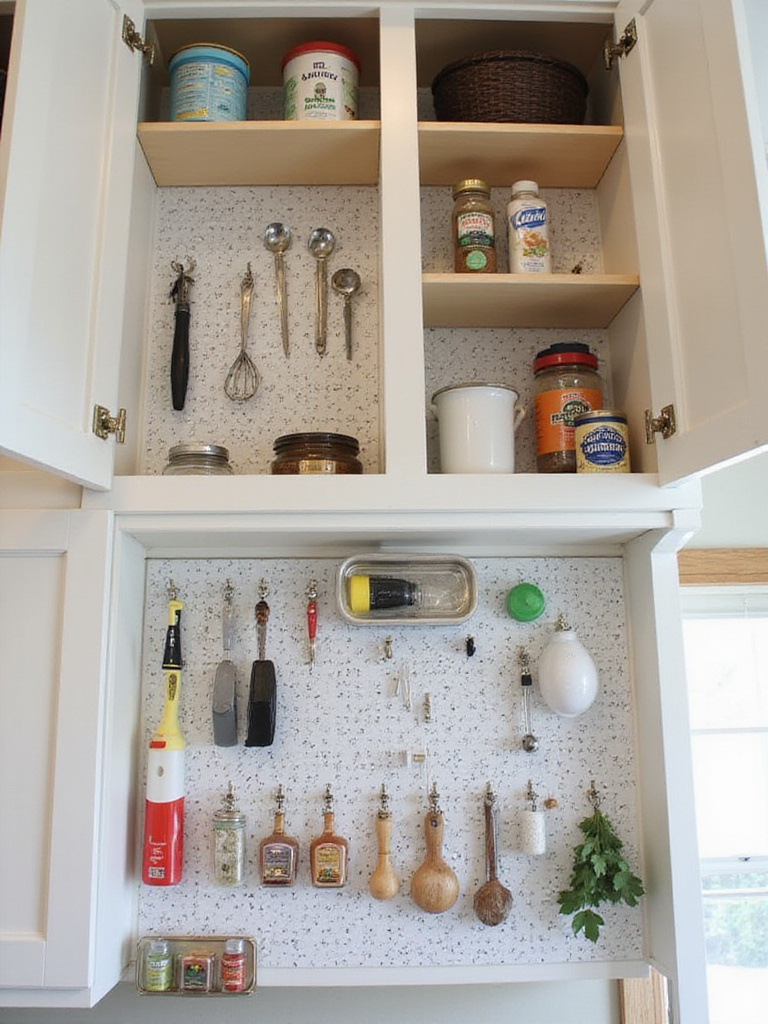
Pegboards excel at organizing oddly-shaped items like measuring spoons, specialty tools, or pot lids that don’t fit neatly into traditional drawer organizers. The modular nature of pegboard accessories means you can reconfigure storage as your collection changes, making this a sustainable long-term solution for kitchen cabinet storage challenges.
Installation requires basic DIY skills but delivers professional-looking results that can be customized to match your kitchen’s aesthetic. The key is ensuring proper spacing behind the pegboard to accommodate hooks and accessories while maintaining cabinet door functionality.
The artisan collective that creates the best pegboard accessories understands that flexibility and durability must work together for long-term success.
18. Internal Drawer Transformation: Fixed Shelf Solutions
Fixed shelves in deep base cabinets often create more problems than they solve, limiting flexibility while making stored items difficult to access. Converting these static shelves into pull-out drawers transforms problematic storage into highly functional, accessible space that works with your daily routines rather than against them.
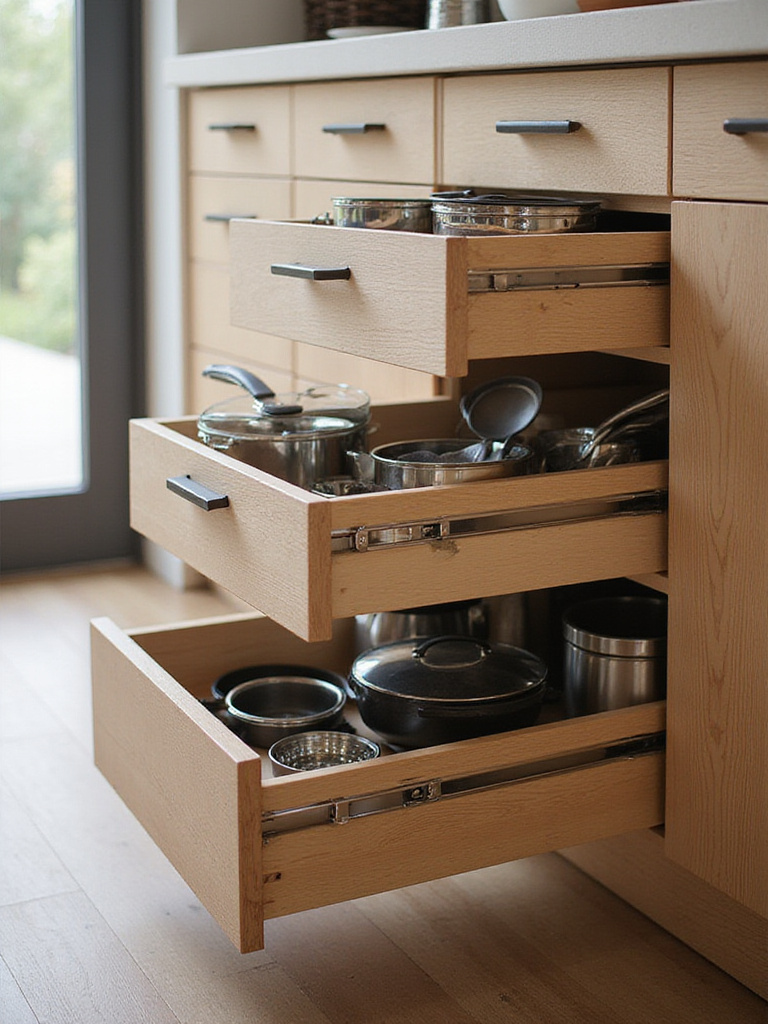
The investment in quality drawer slides and construction pays dividends in both convenience and cabinet longevity. Full-extension slides ensure complete access to stored items, while soft-close mechanisms prevent slamming and extend the life of both drawers and cabinet contents. This upgrade particularly benefits heavy items like pots, pans, and small appliances.
Professional installation ensures proper alignment and weight distribution, though many systems are designed for confident DIY installation. The key is selecting components that match your cabinet dimensions while supporting the intended load requirements for your specific storage needs.
The craftsmanship reveals itself in details like smooth operation, proper weight distribution, and seamless integration with existing cabinet aesthetics.
19. Vertical Cookbook and Board Storage
Cookbooks, cutting boards, and baking sheets create unstable, space-wasting stacks when stored horizontally, making access difficult while risking damage to valuable items. Vertical storage systems transform these problematic piles into organized, accessible libraries where each item has its own designated slot.
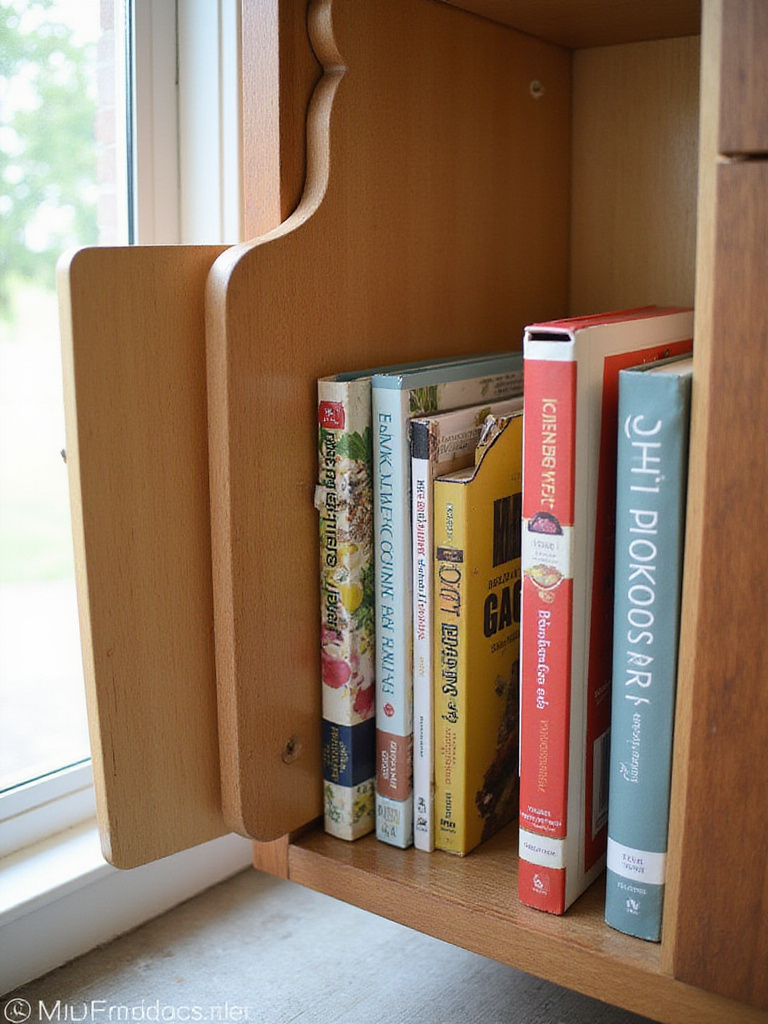
The key to successful vertical storage lies in creating dividers that are appropriately spaced for your specific collection while providing adequate support for heavier items. Adjustable systems offer flexibility as your collection evolves, while fixed dividers provide maximum stability for consistent item sizes.
This approach works particularly well in base cabinets where vertical space often goes unused, effectively doubling storage capacity while improving accessibility. The visual organization that results makes inventory management effortless while protecting valuable cookbooks and cutting boards from damage.
“The challenge of awkward spaces becomes easier when you create dedicated slots that work with item dimensions rather than against them.”
20. Label Logic: Communication Through Organization
Even the most thoughtfully organized kitchen cabinet storage system fails without clear communication about where items belong and how the system functions. Labels provide essential visual cues that help all household members maintain organization while reducing the cognitive load of remembering complex systems.
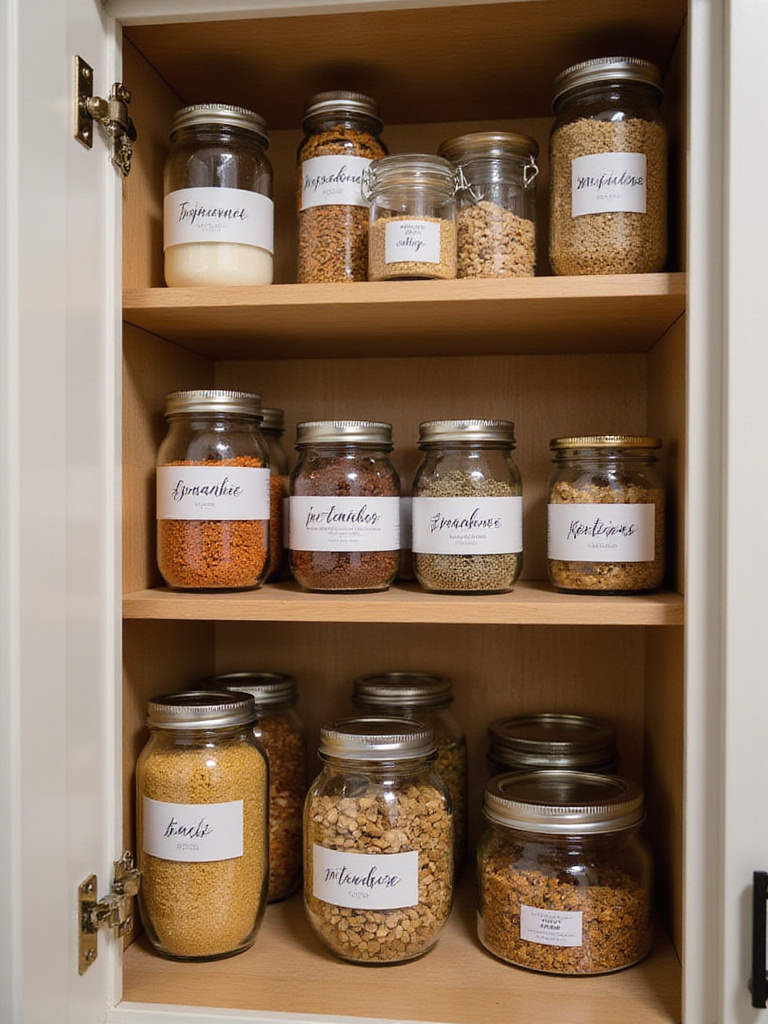
Effective labeling goes beyond simple identification to include helpful information like expiration dates, usage instructions, or category definitions that support long-term organization success. The key is choosing labeling methods that are durable, legible, and appropriate for your kitchen’s aesthetic while serving their functional purpose.
Consider involving family members in the labeling process to increase buy-in and understanding of the organizational system. When everyone understands the logic behind storage decisions, maintenance becomes a shared responsibility rather than one person’s burden.
- Clear, consistent fonts: Easy reading for all ages
- Durable materials: Withstand kitchen moisture and heat
- Strategic placement: Visible when items are stored
- Helpful details: Dates, categories, or usage notes
The styling mistake most people make is over-labeling obvious items while under-labeling complex systems that need explanation.
21. One In, One Out: Sustainable Organization
Maintaining organized kitchen cabinet storage requires ongoing commitment to preventing clutter accumulation through conscious decision-making about new additions. The “one in, one out” rule provides a simple framework for maintaining optimal storage levels while encouraging thoughtful consumption habits.
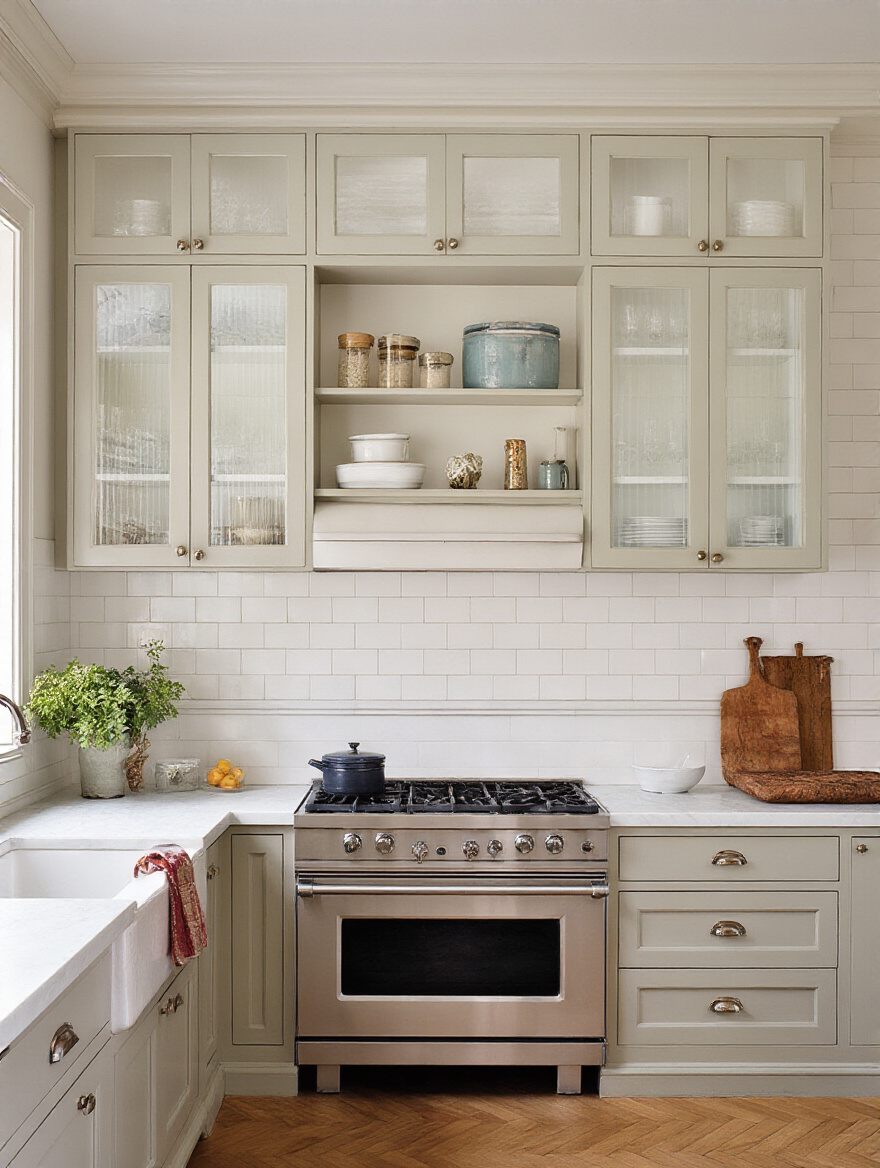
This approach works particularly well for categories prone to multiplication – coffee mugs, storage containers, or specialty gadgets that seem to reproduce when we’re not looking. The key is making the removal decision immediately when bringing new items home, rather than deferring the choice until storage becomes problematic again.
Success with this rule requires establishing clear categories and exit strategies for removed items, whether through donation, recycling, or disposal. The discipline required becomes easier with practice and pays dividends in maintaining the organized systems you’ve worked hard to create.
The sustainable journey of this approach involves reducing consumption while maximizing satisfaction with carefully chosen, frequently used items.
22. Regular Review Rituals: Maintenance for Success
Organization isn’t a destination but an ongoing journey that requires regular attention and adjustment to remain effective. Scheduling periodic reviews of your kitchen cabinet storage systems ensures they continue serving your evolving needs while preventing the gradual accumulation of clutter that undermines even the best organizational efforts.
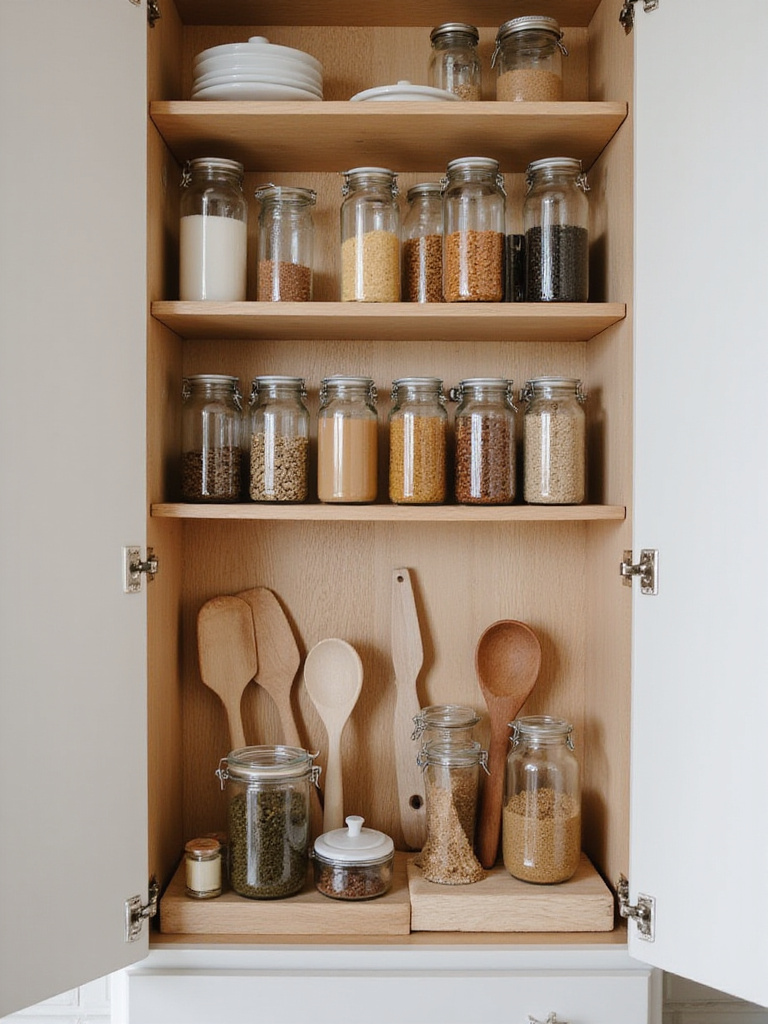
Monthly or quarterly cabinet reviews provide opportunities to assess what’s working, identify problems before they become overwhelming, and make adjustments based on changing cooking habits or family needs. These sessions also help with food safety by identifying expired items and maintaining proper rotation of pantry goods.
The key is treating these reviews as routine maintenance rather than major overhauls, keeping sessions focused and manageable while maintaining the organizational momentum you’ve built. This proactive approach prevents the need for complete reorganization projects while keeping your kitchen functioning at its best.
As morning light filters through your beautifully organized cabinets, you’ll appreciate how this regular attention maintains the calm, efficient kitchen environment that makes cooking genuinely enjoyable.
Conclusion: Your Organized Kitchen Awaits
These 22 brilliant kitchen cabinet storage hacks represent more than just organizational strategies – they’re pathways to a more efficient, enjoyable, and stress-free cooking experience. From the foundational importance of decluttering and precise measurement to the ongoing commitment of regular maintenance, each strategy builds upon the others to create comprehensive systems that truly work.
The beauty of these solutions lies in their adaptability to different kitchen sizes, budgets, and lifestyle needs. Whether you’re working with a compact apartment kitchen or a spacious family cooking space, these principles can be scaled and customized to create the organized, functional environment you’ve been dreaming of. The investment in proper organization pays dividends daily through reduced stress, improved efficiency, and genuine enjoyment of your kitchen space.
Start with one or two strategies that resonate most strongly with your immediate needs and current frustrations. Success builds momentum, and each small victory will inspire you to tackle additional challenges with confidence. Your kitchen cabinet storage transformation awaits – choose your first hack and begin creating the organized, efficient cooking space that will serve you beautifully through every season and celebration ahead.
